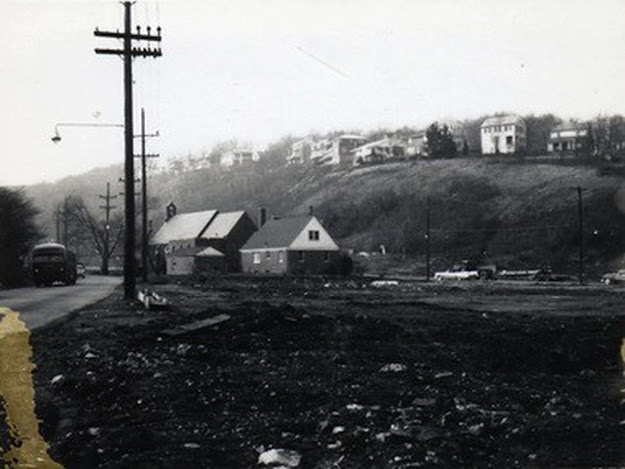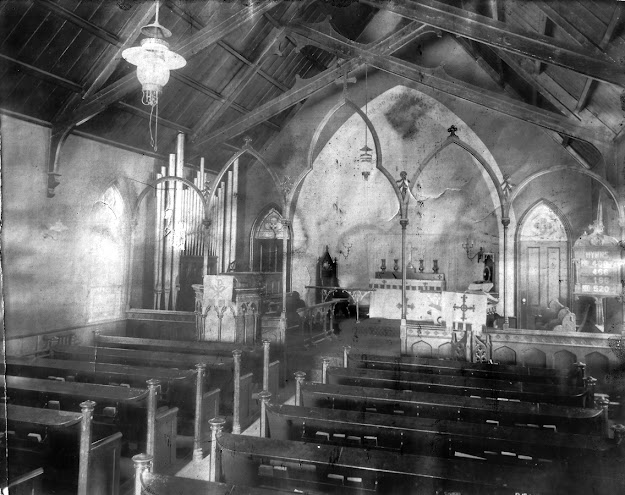From the Reformed Church on Staten Island site:
Old North Church, built 1717
Reformed Church on Staten Island: The oldest church of any denomination on Staten Island is the Reformed Church on Staten Island in Port Richmond on Port Richmond Avenue. The Dutch and French-speaking Huguenot settlers of Staten Island prior to 1680 were few in number and unable to support a permanent minister. Instead, preachers traveled to the Island every couple of months. In, Petrus Tesschenmacker, the first Staten Island minister ordained in the New World, was received by the tiny village of Port Richmond (New Amsterdam had become an English possession in 1674). He left Port Richmond for Schenectady in 1686 where he and his congregants were killed by French and Indian raiders in 1690.
From the Reformed Church on Staten Island site:
Third church, built 1787
The first church building went up in 1680, and a second, hexagonal one, in 1717. That building was burnt by the British occupation forces in 1780, and a new one was built in 1787. Finally, in 1844, the present brick church was built, with expansions being added over the next few decades. Surrounding the church is a cemetery that dates back to the 1690s.
Present church, 1844
Like most mainline Protestant churches, the Reformed Church on Staten Island is past is prime. Its buildings are in need of repair and its congregation is small. What it does have is a terrific website that has a detailed history of the church and many of its historical documents and architecture on display.
Brighton Heights Reformed Church: While I only attended Brighton Heights Reformed Church for about two years in my forties, my paternal roots lie with that congregation's denomination. My father's family is Dutch and English. While I'm uncertain of exactly when, his Dutch antecedents arrived in New Amsterdam prior to the British takeover. Family tradition held they were employees of the Dutch West India Company.
From the American Guild of Organists site:
original 1820 building, ca. 1900
Whatever the real history is, Vredenburghs have lived in New York City - mostly Harlem, the Bronx, and, for the last fifty-five years, Staten Island - for over 350 years now. I have photos and membership papers from my dad's mom from her time as a member of Elmendorf Chapel on East 121st Street in Manhattan. During the time I attended Brighton Heights under the late Rev. Seawood, I felt very much at home and part of true Christian fellowship.
Looking north on St. Marks Place towards 1860s church, 1937
What's now Brighton Heights Reformed Church was founded in Tompkinsville in 1818 under the supervision of ex-NY governor (and later, vice-president), Daniel D. Tompkins and the spiritual supervision of the Rev. Peter I. Van Pelt of the church in Port Richmond. This seems to have grown out of Tompkins' earlier prompting of Van Pelt to hold services within the walls of the Quarantine Station located in Tompkinsville. This sort of direct community service was continued in the early eighties by Brighton Heights when it opened the first overnight homeless shelter on Staten Island. That undertaking would evolve into Project Hospitality, which still serves the Island's homeless individuals.
1860's church
The original church was built in 1820, roughly at the corner of Van Duzer and St. Paul's. As the neighborhood became more commercial, land was bought on Brighton Heights, and a new church was built at the present location on the corner of Fort Place and St. Mark's Place in the 1860s. That building perished in an accidental fire during renovations in 1996. Finally, in March of 2000, Pastor Seawood led the congregation into the new building.
Brighton Heights Reformed Church, present
Mariner's Harbor Reformed Church: This church, while it closed in 1974, has not stood vacant. I'm not sure when, but for many years it has been Fellowship Baptist Church. The building is on the corner of Richmond Terrace and Lockman Avenue. Leng and Davis have little to say about it. While claims were made it first organized in 1885, they state it was "not mentioned in the Chamber of Commerce report of 1896." It was incorporated in 1907. I imagine it closed due to Mariner's Harbor old Dutch residents moving to New Jersey and the general mainline Protestant decline. I've written to the denomination's archivist, and should I ever hear back, I'll post more details about the congregation and its history.
Mariner's Harbor Dutch Reformed Chapel, postcard
Mariner's Harbor Reformed Church, 4/23/32





















